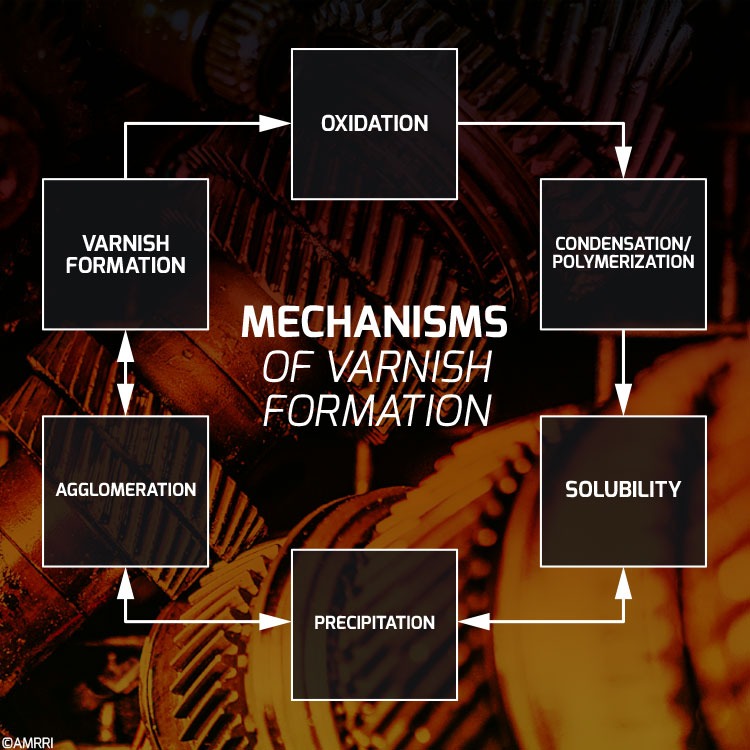Varnish can be likened to cholesterol in the human body. It can build up in our arteries and eventually clog those, causing restrictions in blood flow to our heart which may lead to a heart attack.
Humans cannot simply change their blood to remove the cholesterol build-up. However, cholesterol is controlled through proper diet, exercise, and with some condition monitoring in the form of blood tests to help gauge the presence of it in the bloodstream. Similarly, a couple of approaches can be used to reduce the varnish build-up or eliminate it.
As per Livingstone et al. (2011), the lifecycle of varnish is critical. Particular attention should be paid to the double arrows between the stages of Solubility to Varnish formation in the figure below.
This means that even after varnish has been deposited, it can be solubilized back into the oil. This can only occur if conditions are met per Hansen’s Solubility principles where the solvent and degradation products meet using the three parameters of Polarity, Hydrogen Bonding, and Dispersive Forces as discussed in “The Hansen Solubility Principles and Its Relation to Varnish” (2022).

The Varnish Lifecycle as per Livingstone et al. (2011)
Varnish exists in various forms and can consist of differing compositions. Hence, it is essential to understand the characteristics of the varnish being formed in a system before attempting to eliminate it.
There are certain technologies, such as solubility enhancers or specifically engineered filtration media, which can be effective at removing lube oil varnish. However, this technology is heavily reliant on the type of varnish being formed and can be customized as per the system accordingly.
Solubility enhancers can solubilize the varnish back into the oil solution. When these deposits are reintroduced into the oil, they can be removed using resin-based filtration. In this method, the media is specifically designed to allow for the adsorption and removal of the varnish which presently exists in the oil.
When these methods are used together, they can prove quite effective and prevent manufacturing plants from experiencing unwanted downtime.
To summarize, it is of utmost importance to first understand the characteristics of the varnish being produced in your equipment before attempting to remove it from your system.
There is no cookie-cutter method to eliminate varnish from a system as it is a complex deposit. Similar to practices we observe with our bodies in the instances of cholesterol build-up, we can employ methods of dissolving the varnish and removing it while monitoring for possible recurrences in the future.
Want to read the entire article? Find it here on Precision Lubrication Magazine!
References:
Livingstone, Ameye, & Wooton. (2015.). Antioxidant Monitoring as Part of Lubricant Diagnostics – A Luxury or a Necessity? OilDoc, Rosenheim, Germany.
Livingstone, Overgaag, & Ameye. (2011). Advanced removal Techniques for Turbine oil Degradation Products. Powergen Milan.
Mathura, S. (2020). Lubrication Degradation Mechanisms (CRC Press Focus Shortform Book Program) (1st ed.). CRC Press.
The Hansen Solubility Principles and its Relation to Varnish. (2022, July 31). Fluitec International. https://www.fluitec.com/the-hansen-solubility-principles-and-its-relation-to-varnish/




